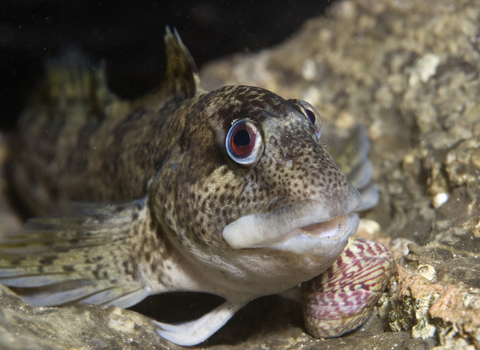
Shanny ©Linda Pitkin/2020VISION
Shanny
The shanny is a common sight in rockpools all around the UK. They are feisty little fish and have been known to bite when caught, so watch your fingers!
Scientific name
Lipophrys pholisWhen to see
January to DecemberSpecies information
Statistics
Length: up to 17cmCommon
